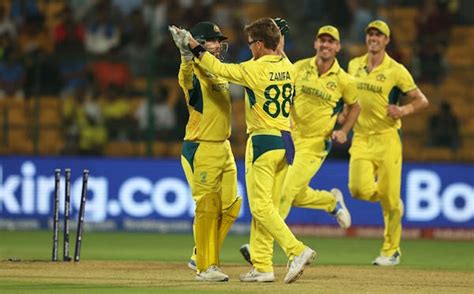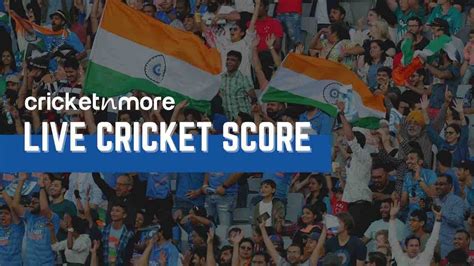Explore how analytics revolutionizes cricket, enhancing player performance, shaping strategies, predicting outcomes, and the future of data in the game.In the ever-evolving world of sports, cricket is experiencing a revolutionary shift, thanks to the emergence of analytics. Gone are the days when intuition and experience solely dictated on-field strategies; today, data-driven insights play a pivotal role in shaping the game. As teams harness the power of analytics to assess player performance, develop tactical strategies, and even predict match outcomes, the essence of cricket is transforming. This article delves into the critical role of analytics in cricket, exploring how data collection enhances player performance, the strategic advantages teams gain, and the remarkable case studies showcasing success stories. Join us as we uncover future trends in this dynamic field and examine how analytics are not just changing the game, but redefining it for generations to come.
Understanding Analytics in Cricket: A Game Changer
In the modern landscape of sports, analytics in cricket has emerged as a revolutionary force that influences decision-making, strategy formulation, and overall game performance. With the advent of technology, coaches and teams are increasingly relying on data-driven insights to gain a competitive edge. By harnessing vast amounts of data from various sources, stakeholders can analyze player performances, match conditions, and even predict outcomes with remarkable accuracy.
At the core of this transformation is the collection of comprehensive metrics, ranging from player statistics to ball-by-ball analysis. Teams now employ sophisticated tracking systems to gather data on individual player performances, including batting averages, bowling speeds, and fielding efficiency. This data is then processed using advanced statistical tools and algorithms to derive actionable insights that can influence coaching strategies and on-field tactics.
A critical component of analytics in cricket is the visualization of data. By creating intuitive dashboards and charts, analysts can present complex information in an easily digestible format that aids coaches and players in understanding performance trends and areas for improvement. Moreover, visual tools allow teams to compare performance metrics against competitors, facilitating informed strategic planning.
This analysis extends beyond individual performance. Teams can analyze historical data to understand the dynamics of different playing conditions, such as pitch behavior and weather influence. Such insights not only help in preparing for upcoming games but also enable teams to devise customized game plans tailored to exploit opponents’ weaknesses effectively.
The incorporation of analytics in cricket signifies a paradigm shift towards data-driven decision-making in cricket. As the game continues to evolve in response to technological advancements, it is clear that teams that embrace analytics will have a distinct advantage on the field. The marriage of traditional skills with modern-day data strategies is transforming cricket into a more strategic and tactically-rich sport.
How Data Collection Enhances Player Performance
In recent years, the integration of analytics in cricket has revolutionized how players train and perform on the field. By systematically collecting and analyzing data, teams can identify individual strengths and weaknesses, enabling tailored training programs that maximize players’ potential.
Data collection methods such as video analysis, wearable technology, and motion tracking systems allow coaches and analysts to gain real-time insights into player performance. For instance, parameters like batting techniques, bowling speeds, fielding agility, and fitness levels can all be monitored and assessed. This data-driven approach ensures that players receive targeted feedback that is informed by actual performance metrics rather than subjective observations.
Furthermore, using analytics, teams can establish benchmarks for player performance. Coaches can compare a player’s statistics against those of top performers in the league or even within their own team. This comparative analysis helps in setting realistic goals for improvement, pushing players to hone specific skills that align with their overall performance metrics.
The collaboration between players and their performance analysts is crucial. Players who embrace data insights often see significant enhancements in their game due to the actionable recommendations derived from the data. Such personalized insights reinforce a culture of continuous improvement within the team.
Ultimately, the enhancement of player performance through analytics in cricket is not just about individual growth; it contributes to the overall success of the team. When all players are performing at their best, the likelihood of achieving team goals increases, leading to better outcomes on the field.
The Development of Tactical Strategies Through Data
The integration of analytics in cricket has fundamentally reshaped how teams devise and implement their tactical strategies. Coaches and analysts now rely on a wealth of data to inform their decisions, allowing for a more nuanced approach to each match. Here are some key areas where data plays a crucial role in tactical development:
- Player Matchups: Data analysis enables teams to identify favorable matchups between players. By studying past performance against specific opponents, teams can optimize their batting order and bowling strategies for maximum effectiveness.
- Field Placements: Analysts utilize historical data and predictive modeling to determine the best field placements for different bowlers and types of batsmen. This targeted approach can limit scoring opportunities and enhance wicket-taking chances.
- Pitch Conditions: Assessing pitch data over time allows teams to understand how the pitch will behave during a match. This knowledge influences decisions such as the choice of bowlers or the timing of declarations.
- In-Game Adjustments: Real-time data collection during matches allows for prompt tactical adjustments. Coaches and captains can receive data on player performance and opposition tactics, enabling quick strategic shifts as needed.
Furthermore, advanced analytics can lead to the creation of simulation models that predict different scenarios during a match. Such models assist in strategizing for various innings and game phases, ultimately leading to more informed decision-making on the field.
The development of tactical strategies through analytics in cricket is not just about collecting data; it’s about transforming that data into actionable insights that can significantly impact a team’s performance. As teams continue to embrace these technologies, the complexity and efficiency of their strategies will only deepen, further fueling the evolution of the game.
Using Analytics in Cricket to Predict Match Outcomes
The integration of analytics in cricket has revolutionized the way teams prepare for matches and assess their chances of victory. By analyzing extensive historical and real-time data, teams can identify patterns and trends that may influence the game’s outcome. This approach allows teams to develop comprehensive models that account for numerous variables, including player form, pitch conditions, weather, and the opponent’s historical performance.
One significant aspect of predicting match outcomes is the use of advanced statistical methods. Teams can apply techniques such as regression analysis and machine learning algorithms to create predictive models that offer insights into how different scenarios may unfold. For example, data on a specific player’s performance against left-handed bowlers can be analyzed to determine the possible impact on the match if an opposing team fields such bowlers.
Another crucial factor is situational analysis. Analytics can track players’ performances in various situations—such as during powerplay overs, death overs, or when chasing a target—allowing teams to strategize more effectively against their opponents. Analytics tools can quantify team strengths and weaknesses, making it easier for coaches and analysts to craft tailored game plans that maximize their chances of winning.
Moreover, the use of analytics in cricket has led to the development of predictive dashboards that provide live updates and projections as the match progresses. These dashboards consider real-time data inputs to adjust predictions as new information becomes available, helping teams and analysts make informed decisions during the game.
As the use of analytics continues to grow, we can expect that the accuracy of match outcome predictions will improve, making it an invaluable tool in the cricketing landscape. The synergy of human intuition and analytical insights promises a new era in cricket strategy, making every match a thrilling and calculated battle.
Case Studies: Teams Benefiting from Analytics in Cricket
In the fast-evolving world of cricket, the integration of analytics in cricket has proven to be a significant advantage for several teams. Here, we explore a few case studies that illustrate how data-driven strategies have transformed performance and outcomes across various competitions.
- England National Team: Under the guidance of Coach Trevor Bayliss, England revolutionized their approach to limited-overs cricket. By using analytics in cricket, they gained insights into scoring patterns and opposition weaknesses, leading them to a historic victory in the 2019 Cricket World Cup.
- IPL Teams: The Indian Premier League (IPL) franchises rely heavily on data analytics for player auction strategies and in-game tactics. For instance, the Mumbai Indians utilize advanced statistical models to assess player performance inconsistencies, leading to informed decisions that contributed to multiple championship titles.
- Rajasthan Royals: This team has been at the forefront of employing innovative analytical tools, such as predictive modeling, to scout talent. Their efforts paid off as they recognized the potential of players like Jos Buttler long before they became international stars.
These examples underscore the critical role of analytics in cricket today. Teams that adapt to data-driven methodologies are not just staying competitive; they are setting new benchmarks for success in the sport.
Future Trends: The Evolution of Analytics in Cricket
As the game of cricket continues to evolve, analytics in cricket is expected to play an increasingly pivotal role. Technological advancements and the rising availability of data have paved the way for new trends that will further enhance the analytical capabilities within the sport.
One of the most notable trends is the integration of artificial intelligence (AI) and machine learning into cricket analytics. These technologies enable teams to analyze vast datasets quickly, uncovering patterns and insights that were previously difficult to identify. By leveraging AI, teams can make more informed decisions regarding player selection, match strategies, and training regimens.
Additionally, wearable technology is set to revolutionize player performance tracking. Devices that monitor players’ biomechanics, heart rates, and fatigue levels provide coaches with data that can be used to maximize player output while minimizing injury risk. Such insights will be crucial in the management of player fitness, particularly in high-stakes tournaments where every match counts.
Moreover, the role of data visualization is becoming increasingly important in cricket. As teams strive for clarity and ease of understanding, sophisticated data visualization tools will assist coaches and players in accessing and interpreting complex datasets. These tools will facilitate better communication of analytical insights, enabling teams to act on data-driven strategies more efficiently.
The rise of fan engagement analytics is another trend to watch. Teams and organizations are beginning to use data to understand fan behavior, preferences, and engagement levels. By analyzing this information, franchises can tailor their marketing efforts and enhance the overall spectator experience, thus growing the sport’s appeal.
The future of analytics in cricket looks bright, with continuous innovations and improvements set to change the game even further. As teams adopt these emerging technologies, the influence of data will only deepen, ensuring that analytics remains an integral part of cricket’s evolution.
Frequently Asked Questions
What is the role of analytics in cricket?
Analytics plays a crucial role in cricket by providing teams with insights into player performance, strategies, and opposition weaknesses, helping them make data-driven decisions.
How has data analysis changed player training?
Data analysis has transformed player training by enabling personalized training regimens based on individual performance metrics, optimizing player development, and reducing injury risks.
What types of data are commonly analyzed in cricket?
Commonly analyzed data in cricket includes batting and bowling averages, strike rates, player fitness metrics, pitch conditions, and historical performance against specific opponents.
How do teams use analytics during a match?
Teams use analytics during a match to assess real-time performance, adjust strategies based on ongoing data, and make informed decisions regarding batting orders and bowling rotations.
What impact has technology had on cricket analytics?
Technology has significantly enhanced cricket analytics by introducing tools like Hawk-Eye, ball-tracking systems, and wearable fitness devices that provide detailed performance metrics.
Can analytics predict the outcome of a match?
While analytics can provide forecasts based on historical data and current player performance, the unpredictable nature of sports means outcomes can never be guaranteed.
What is the future of analytics in cricket?
The future of analytics in cricket looks promising with advancements in machine learning and artificial intelligence, which are expected to provide deeper insights, enhance strategic planning, and improve overall performance.









